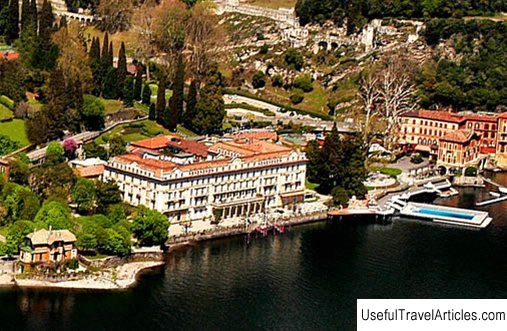Villa d'Este in Italy, Tivoli resort
Rating: 7,9/10 (1243 votes)  Villa d ’ Este is one of the most famous Italian villas of the 16th century. The villa complex includes a beautiful palace with an adjoining picturesque garden. The villa is located on a hill on the outskirts of Tivoli. The villa has gained particular popularity thanks to its fountains. It was these fountains that Peter the Great strove to surpass when creating Peterhof. Since 2001, the d'Este estate has been on the UNESCO World Heritage List. In 1550, Ippolito II d'Este, appointed governor of Tivoli, planned to set up a park on a steep hill near the palace. The plan for the creation of the park was finally formed only by 1560. The author of the project was Pirro Ligorio – archaeologist and architect who excavated Hadrian's villa in 1550. The decoration of the pitchfork halls has been carried out since 1563 under the leadership of Girolamo Muziano, who was soon replaced by Livio Agresti and then by Federico Zuccaro. The walls were decorated with Flemish tapestries, stucco and frescoes, and statues. By 1572, the decoration of the halls was almost complete. In 1605, Alessandro d ’ Este decided to start a major renovation of the park. The work lasted from 1660 to 1670, with the participation of the famous sculptor Bernini. In the 18th century and until 1814, the villa was in disrepair, until the entire ensemble was inherited by Franz Habsburg. Until the First World War, the villa was in the possession of Archduke Franz Ferdinand, then it was nationalized. In the 1920s and after the Second World War, large-scale reconstruction works were carried out in the villa. In 2007, the villa's park was declared the 'Most Beautiful Park in Europe'. The beautiful fountains in the garden deserve special attention, the most notable of which is the Organa Fountain. The construction of the fountain dates back to 1568. The intricate fountain system also included the Boiling Staircase, named for the 42 bodies of water that surround it, and the Dragon Fountain. The so-called Road of a Hundred Fountains was framed with the greatest scope, each of which corresponded to a relief for episodes from the poem Metamorphoses. Nearby were the Grottoes of Diana and Venus, as well as the Fountain of Rometta, made in the form of the seven hills of Rome and their surrounding attractions, such as the Pantheon and the Colosseum. that at the end of the XIX century the villa was visited by Franz Liszt, who gave one of the final concerts here. The composer dedicated to the villa the work"Fountains of Villa d" Este", as well as" At the Cypress Trees of Villa d"Este".    We also recommend reading Park Magic Island (Isla Magica) in Spain, Seville resort Topic: Villa d'Este in Italy, Tivoli resort. |




